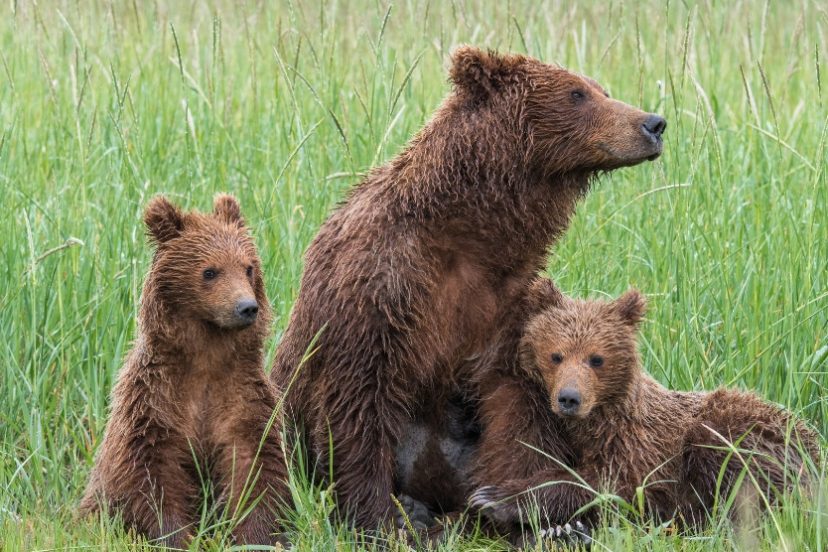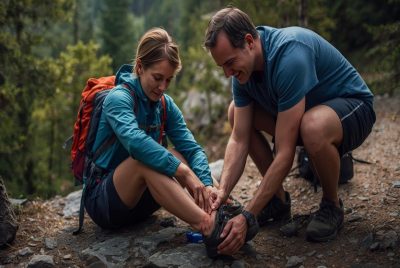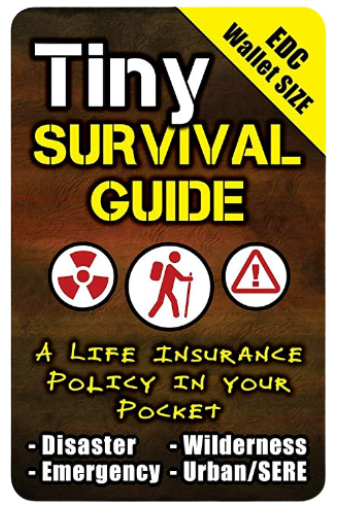When it comes to survival and prepping, your first aid kit isn’t just a box of…
9 Ways To Protect Yourself From Wild Animals In The Wilderness

Exploring the wilderness can be an exhilarating and rewarding experience, offering a chance to reconnect with nature and escape the rush of everyday life.
However, it’s important to remember that the wild is home to a wide variety of animals, some of which may pose unexpected dangers if encountered unprepared.
Whether you’re hiking through dense forests, camping under the stars, or traversing rugged terrain, understanding how to coexist safely with wildlife is key to ensuring a safe and enjoyable adventure.
By learning the right habits and precautions, you can significantly reduce risks while respecting the animals’ natural habitats.
Keep reading to discover practical ways to protect yourself while still appreciating the wonders of the wild.
1)) Stay Calm
Remaining calm when encountering wild animals is vital for your safety and theirs. Animals are highly sensitive to human behavior and can often perceive sudden movements, loud noises, or apparent aggression as a threat.
By maintaining a steady demeanor, you’re less likely to provoke a defensive or aggressive reaction. If you come face-to-face with a wild animal, avoid direct eye contact, which can sometimes be interpreted as a challenge.
Instead, slowly back away without turning your back on the animal, giving it enough space to feel unthreatened.
Respecting their natural environment and keeping calm under pressure will significantly reduce the likelihood of escalation, ensuring a safer experience for both you and the wildlife.
2)) Avoid Direct Eye Contact
Avoiding direct eye contact is a practical method to protect yourself when encountering wild animals.
Many animals interpret prolonged or direct gazes as a challenge or a threat, which might provoke defensive behavior.
By looking slightly away or keeping your gaze soft and non-confrontational, you signal that you are not a danger.
This approach is especially vital with larger predators or territorial animals, as maintaining a calm demeanor and avoiding any signs of aggression can help de-escalate a potentially tense situation.
Your body language during such encounters plays a crucial role in ensuring that the animal remains at ease, reducing the likelihood of a confrontation.
With a mindful and respectful attitude, you demonstrate awareness and understanding of the animal’s instincts and boundaries.
3)) Make Noise To Deter
Making noise can be an effective method to keep wild animals at a safe distance and prevent potential danger.
Loud sounds can alert animals to your presence, giving them time to retreat and reducing the chance of a sudden encounter.
By clapping your hands, shouting, or using a whistle, you create an audible signal that often discourages animals from approaching.
This technique works particularly well in areas where visibility is limited, such as dense forests or during twilight, ensuring that animals are aware of your location before they come too close.
Consistently maintaining this practice can also help create a clear boundary, signaling that you are not a threat, but do not want to engage.
Disclaimer: While making noise can be an effective method to deter wild animals, it is crucial to use your judgment to evaluate each situation.
Factors such as the type of wildlife, your environment, and the potential for escalation should guide your decision.
Always prioritize safety and adapt your approach accordingly to protect yourself and the wildlife.
4)) Keep Distance
Maintaining a safe distance from wild animals is one of the most effective methods to ensure both your safety and theirs.
By giving animals ample space, you reduce the likelihood of provoking defensive behavior or causing unnecessary stress to the animal.
Wild creatures have instincts to protect their territory or young, and encroaching on their space can trigger unpredictable reactions.
Observing wildlife from afar allows you to appreciate their beauty and habits without disrupting their environment or natural routines.
Staying vigilant and aware of your surroundings can help you identify potential risks early, giving you time to step back or avoid contact entirely.
This practice not only keeps you out of harm’s way but also fosters respect for the animals and their habitats, promoting coexistence in a way that supports the health of natural ecosystems.
5)) Carry Protection Tools
When venturing into areas where encounters with wild animals are possible, having appropriate protection tools can make a significant difference in ensuring your safety.
Such tools can include items like bear spray, whistles, or even sturdy walking sticks that can serve a dual purpose as a deterrent or self-defense mechanism.
These tools are not only practical but can provide a sense of security while allowing you to react effectively if a situation arises.
It’s important to understand how to use these tools correctly and to carry them in a manner that keeps them readily accessible.
Preparation and awareness go hand in hand, and being equipped with the right protective gear helps you stay calm and confident in the event of an unexpected wildlife encounter.
6)) Know Animal Behavior
Understanding animal behavior is a crucial step in safeguarding yourself from potential wildlife threats. By observing their movements, vocalizations, and body language, you can gain insights into their intentions and mood.
For example, many animals exhibit specific warning signals when they feel threatened, such as a rattlesnake’s rattle or a bear huffing and swaying.
Recognizing these cues can help you assess the situation and decide on the safest course of action. Education on the habits and territories of various species also plays a key role in avoiding dangerous interactions.
Respecting an animal’s space and never feeding wildlife are crucial principles that reduce risks and foster harmony between humans and the natural environment.
Taking the time to learn these behaviors not only protects you but also ensures the safety and well-being of the animals themselves.
7)) Avoid Feeding Wildlife
Feeding wildlife can significantly disrupt their natural behaviors and create dependency on human-provided food sources.
When animals grow accustomed to receiving food from people, they may lose their ability to forage efficiently, which can negatively impact their survival in the wild.
This practice also increases the likelihood of animals approaching humans more frequently, heightening the risk of conflict or dangerous encounters.
Animals driven by the expectation of food might exhibit aggression or unpredictable behavior, posing a safety concern for both parties.
Introducing human food into their diet can harm their health, as it often lacks the nutrients they require to thrive.
Protecting yourself and preserving the integrity of wildlife starts with respecting the boundaries between humans and animals, allowing them to maintain their instincts and independence.
8)) Travel In Groups
Traveling in groups is one of the most effective methods to stay safe from wild animals during outdoor adventures.
When moving as part of a group, the collective presence can deter wildlife from approaching, as many animals perceive larger numbers of humans as a potential threat.
A group also allows for enhanced vigilance, as multiple people can keep an eye on the surroundings and identify possible dangers more quickly.
This shared responsibility can reduce the likelihood of surprise encounters. Furthermore, in case of an emergency or an unexpected situation involving wildlife, having others around ensures there is support and assistance, which can be crucial for handling such scenarios.
By sticking together, individuals create a stronger sense of security and are better prepared to handle the challenges posed by the natural environment.
9)) Secure Food Properly
One of the most effective ways to protect yourself from wild animals during outdoor adventures is by ensuring your food is stored securely.
Food left out in the open can attract unwanted attention from wildlife, creating potentially dangerous situations.
To avoid this, consider using bear-proof containers or hanging food high up in a tree at a safe distance from your campsite.
Make sure to seal all food tightly and dispose of any scraps responsibly. The smell of food or waste can linger and draw animals, so keeping your camp area clean and free of easily accessible scents is essential.
By taking these precautions, you not only safeguard yourself and others but also help preserve the natural balance by reducing human-wildlife interactions.
Conclusion
When venturing into the wilderness, preparation and awareness are your greatest allies in staying safe from wild animals.
By understanding animal behavior, maintaining a clean and organized campsite, and utilizing tools like bear spray or noise-making devices, you significantly reduce the risk of encounters that could lead to danger.
Importantly, respecting wildlife and maintaining a safe distance helps preserve their natural habitat and ensures both their safety and yours.
Remember, the wilderness is their home, and by taking precautions, you become a responsible steward of nature.
Whether you’re embarking on a short hike or an extended camping trip, always prioritize safety, stay alert, and equip yourself with the knowledge and tools necessary to coexist peacefully with the animals around you.
A balanced approach fosters not only safety but also a deeper appreciation for the incredible biodiversity of the natural world.
Stay informed, stay safe, and enjoy the beauty that the wilderness has to offer.





